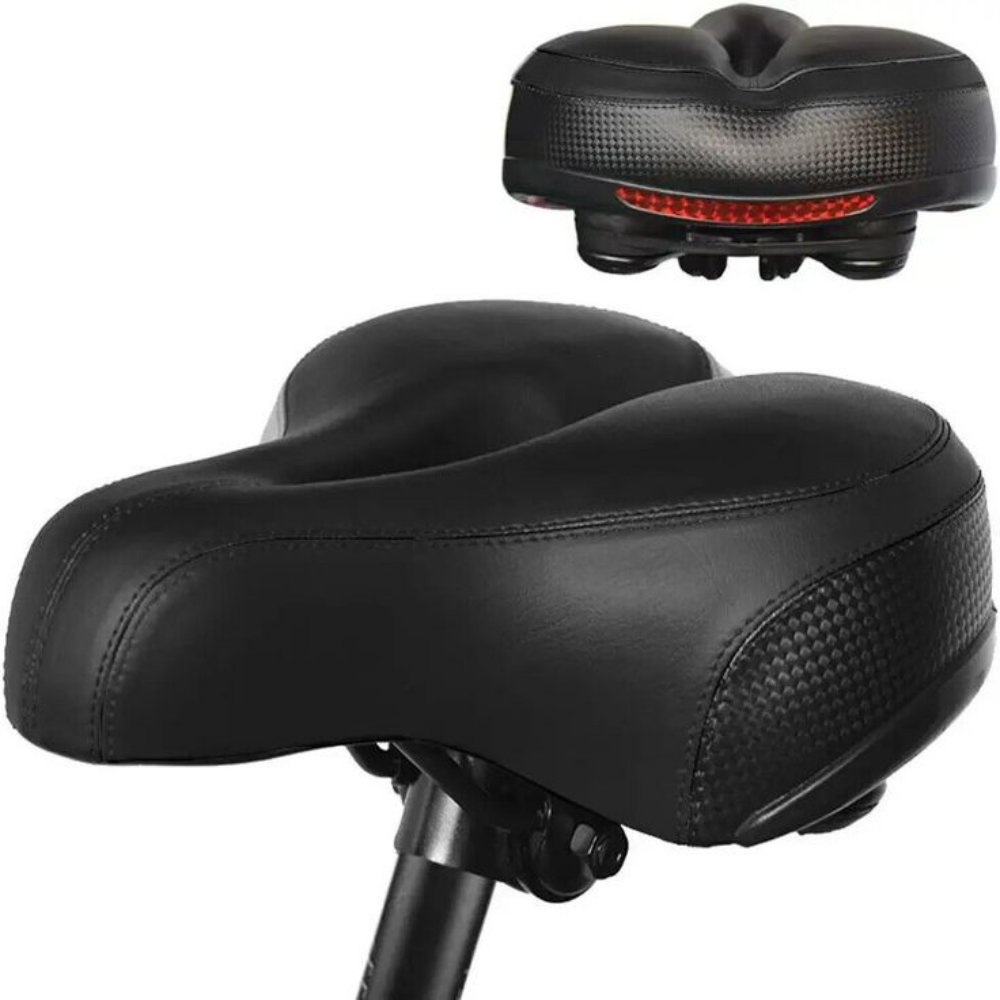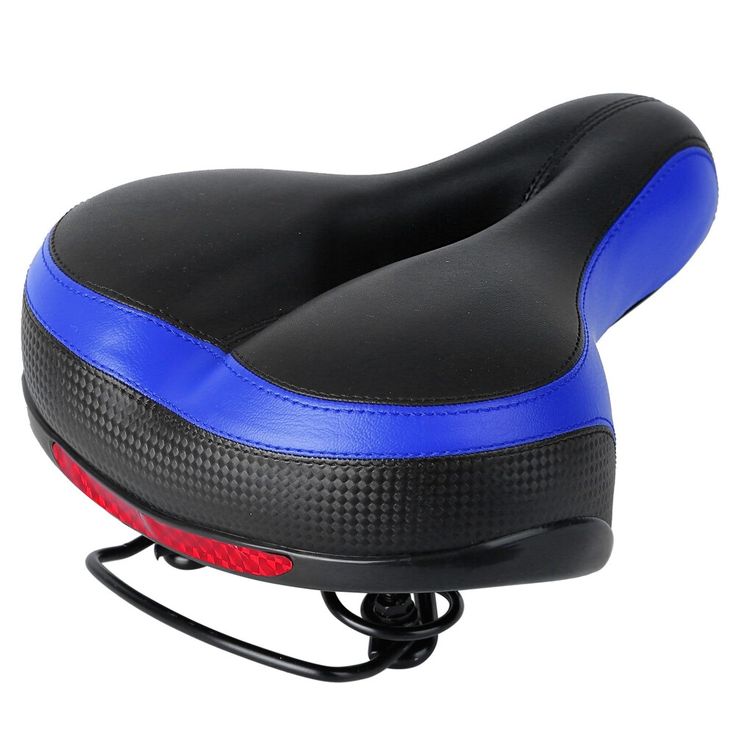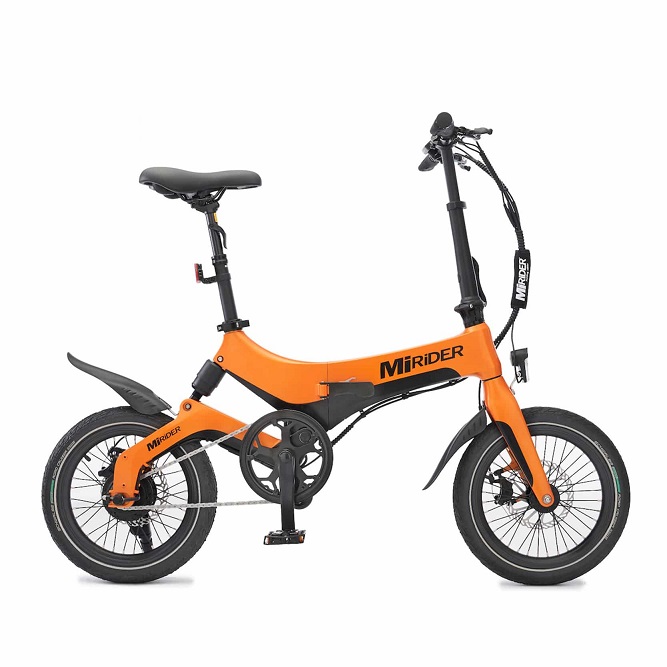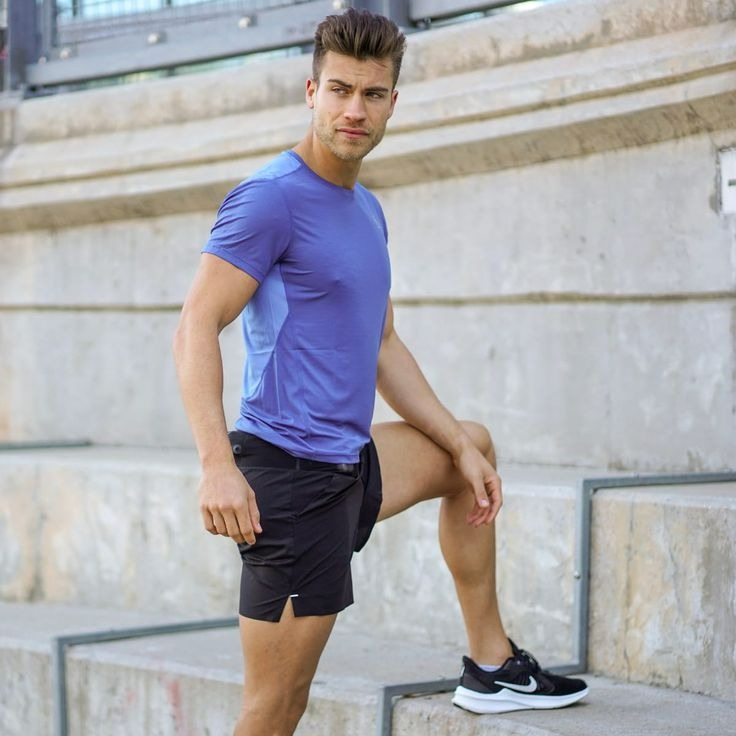The Importance of Bicycle Seat Design
Choosing the right bicycle seat design is crucial for rider comfort. An uncomfortable seat can deter cyclists from enjoying their ride. It is important because it directly influences comfort, endurance, and overall cycling performance.
The design of a bicycle seat, sometimes referred to as the ‘bicycle seat face’, must blend ergonomics with functionality. This ensures that the seat supports the cyclist’s sit bones properly while minimizing discomfort during rides.
Additionally, a well-designed bicycle seat helps prevent long-term health issues related to poor posture or inadequate support. With the rise of cycling as a popular mode of transportation and exercise, the importance of investing in a quality bicycle seat has never been clearer. Ensuring the bicycle seat face matches the rider’s unique anatomical requirements can make a significant difference in their cycling experience.

Anatomy of a Bicycle Seat
Understanding the anatomy of a bicycle seat is key to optimizing rider comfort. The seat, or ‘bicycle seat face’, consists of several components, each with a specific function. Here’s a breakdown of the essential parts:
Shell
The shell forms the seat’s structure and shape. It’s usually made from a tough, flexible material like plastic or carbon fiber.
Padding
Padding provides cushioning for the rider. Foam or gel are common padding materials that conform to the rider’s body.
Cover
This is the layer you sit on. It can be made of leather, synthetic fabrics, or other durable materials.
Rails
Rails attach the seat to the bike’s frame. Typically, they’re constructed from steel, titanium, or alloy.
Cutout
Some seats include a cutout to relieve pressure on sensitive areas. This is especially beneficial on longer rides.
Each of these components plays a crucial role in the comfort and functionality of the bicycle seat face. A well-constructed seat promotes proper posture and supports the sit bones effectively. It’s also paramount that the bicycle seat face is tailored to the rider, taking into consideration their anatomy and riding habits to provide the utmost comfort on the road or trail.
Key Features of a Comfortable Bicycle Seat Face
When looking for a new bicycle seat face, certain features are critical for comfort. Here are the key features to consider:
Shape and Size
The shape of a bicycle seat should match the rider’s body type. Wider seats may offer more support for casual riders, while narrow seats are better for racers. The right size reduces pressure and prevents chafing.
Padding Thickness
The amount of padding is important. Too much can cause instability while too little can lead to discomfort. The correct thickness helps absorb shock and make longer rides more bearable.
Material Quality
High-quality materials make seats more durable and comfortable. Look for weather-resistant covers and breathable fabrics that handle long-term use.
Rail Flexibility
Rails need to allow slight movement. This flexibility helps absorb road vibrations and distribute rider weight evenly.
Adjustable Features
A bicycle seat face with adjustable angles and positions ensures a personalized fit. This customization helps align posture and enhances comfort during rides.
Considering these key features will lead to improved comfort and a better cycling experience. Always choose a quality bicycle seat face that complements your riding style and physique.

Innovative Materials Used in Comfort-Enhancing Seats
To enhance comfort, modern bicycle seats use innovative materials. These materials reduce weight, improve durability, and conform to the rider. They make long rides easier on the body. Here are some key materials that have revolutionized comfort in bicycle seat faces:
Memory Foam
Memory foam molds to the rider’s shape. It provides tailored support. This material reduces pressure points during long rides.
Silicone Gel
Silicone gel offers excellent shock absorption. It’s great for bumpy roads. Riders find it more comfortable than traditional padding.
Carbon Fiber
Carbon fiber makes for lighter, sturdier seat shells. It offers a supportive yet flexible base, without adding excess weight.
Synthetic Leather
Synthetic leather covers resist wear and weather. They are easier to clean than real leather. They also maintain their look over time.
Kevlar Thread
Kevlar thread in the cover stitching adds durability. Seats made with Kevlar withstand more abuse. They are less susceptible to tears and degradation.
Manufacturers use these materials to push boundaries in bicycle seat face design. They aim for the ultimate combination of comfort and performance. Riders should look for these materials when choosing a new bicycle seat face. They can make a noticeable difference in overall comfort.
The Role of Ergonomics in Bicycle Seat Design
Ergonomics play a pivotal role in the design of a bicycle seat face. This discipline focuses on creating products that fit the human body and its movements. A seat designed with ergonomics in mind reduces strain and increases comfort. Here’s how ergonomics shape the bicycle seat face design:
Human Body Contour Matching
Ergonomic seats mirror the shape of a rider’s sit bones. This alignment lessens pressure points. Riders experience comfort resulting from better distribution of weight.
Posture Support
Ergonomic design aids proper posture. It encourages riders to sit correctly, protecting their spine. Good posture also enhances breathing and pedal efficiency.
Reducing Fatigue
Seats tailored to ergonomics minimize rider fatigue. They aid in proper blood circulation. This is crucial for long-distance cyclists and daily commuters.
Vibration Damping
Incorporating materials that absorb shock is a hallmark of ergonomic seats. This feature dampens road vibrations, leading to a smoother ride.
Bicycle seats with ergonomic designs take into account the unique physiology of every rider. They aim to improve the riding experience by reducing discomfort and preventing potential health issues. When selecting a bicycle seat face, consider ones that highlight ergonomic features. Such designs go a long way in enhancing your overall cycling comfort and performance.

Adjusting Your Bicycle Seat for Optimal Comfort
Finding the sweet spot for your bicycle seat face can greatly improve your cycling comfort. Here are steps to ensure your seat is adjusted for optimal comfort:
Check Seat Height
Correct seat height allows for a slight bend in your knee at the bottom of the pedal stroke. Adjust the seat post to match this. It prevents strain on knees and aids efficient pedaling.
Assess Seat Angle
Your seat should be level to support your full body weight. If it tilts too far forward or back, you may experience discomfort. Use an allen wrench to make small adjustments and find the best angle.
Evaluate Fore/Aft Position
The seat’s fore/aft position affects your control and comfort. Your knee should be over the pedal spindle when the crank is horizontal. Slide the seat back or forward on the rails to achieve this alignment.
Test for Reach
Reaching too far to the handlebars can cause back pain. A proper reach means relaxed shoulders and a slight bend in the elbows. If the reach is off, adjust the seat or handlebar position.
Consider a Professional Fitting
If discomfort persists, consider getting a professional bike fitting. Experts can fine-tune your bicycle seat face and bike setup tailored to your physique.
Making these adjustments to your bicycle seat can have a profound impact on your riding experience. Remember to test ride and re-adjust as needed to find your best positioning for a comfortable ride.
Maintenance Tips for Extending Seat Life and Comfort
To keep your bicycle seat face in top condition and ensure it continues to provide comfort, regular maintenance is essential. Here are some practical tips to help you extend the life and comfort of your bicycle seat:
Keep it Clean
Regularly clean your seat using mild soap and water to remove dirt and sweat. Avoid harsh chemicals that can damage the materials. Allow it to air dry completely before use.
Check for Wear and Tear
Inspect your seat for signs of wear, like cracks or faded areas. If the padding feels compressed or the cover is torn, it might be time for a replacement.
Tighten the Rails
Ensure the rails that connect the seat to the bike are secure. Loose rails can lead to instability and discomfort during rides. Tighten them with the appropriate tools.
Protect it from the Elements
Whenever possible, store your bicycle indoors to protect the seat from extreme temperatures and sunlight. Use a bike cover if outdoor storage is unavoidable.
Use a Seat Cover
A removable seat cover can add extra padding for comfort. It also protects the original seat material from wear and potential damage.
Lubricate Moving Parts
If your seat has adjustable features, keep the mechanisms lubricated. This ensures smooth adjustment and prevents rust or corrosion.
By following these simple maintenance tips, you can significantly prolong the life of your bicycle seat face while maintaining the comfort needed for enjoyable rides. Regular attention to your seat’s condition is an investment in your overall cycling experience. Remember to incorporate these tips into your bicycle care routine, and your seat will remain a reliable aspect of your cycling gear.

